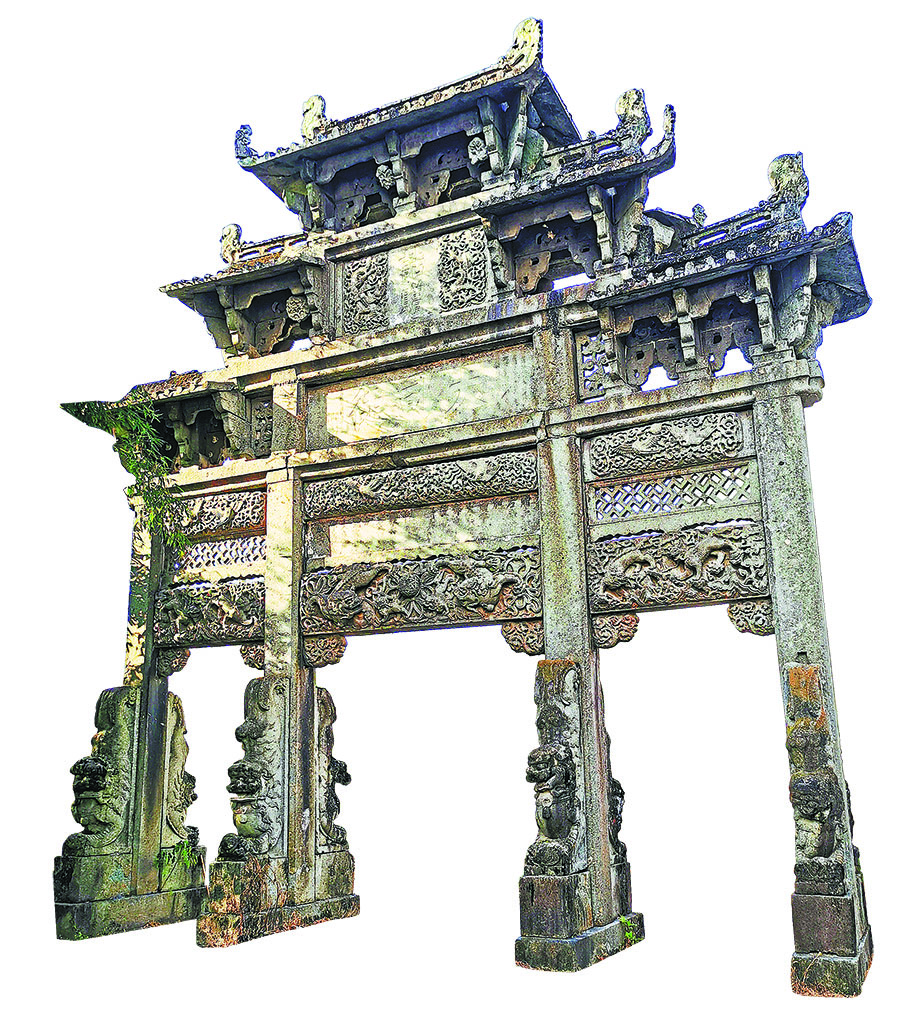

Chen says that the stone carvings at the Wu family ancestral temple in Shexian county depict 10 famous views of Hangzhou's West Lake in Zhejiang province. Legend has it that a family member who grew prosperous doing business in Hangzhou sought to fulfill his elderly mother's desire to witness his success, and recruited skilled artisans to replicate Hangzhou's scenic beauty on the blue-stone boards of their ancestral temple, thus allowing his mother to experience the city's splendor without undertaking a tiring journey.
"This embodies filial piety and devotion to family bonds through an enduring display of love and respect," he says. The exquisite carvings were the work of Huizhou craftsmen, a group known during the Ming and Qing dynasties for their skill at various art forms including carving and woodblock printing.
Their success was tied to the support of Huizhou merchants, who devoted a great deal of wealth to the best materials. Artisans were given plenty of time to build the splendid homes in which the merchants sought to retire. As a result, craftspeople had both the money and the time to work meticulously, and satisfy their patrons, Chen says.
He makes particular mention of the wood carvings in a residence in Yixian county's Lucun village, which are said to have been worked on by two artisans for nearly 20 years, a demonstration of the determination and devotion of Huizhou merchants to have the perfect dwelling, no matter the cost.
Although Huizhou's craftspeople were highly skilled, apart from being known for their accomplishment, most failed to leave their names in history. But their legacy continues to shine.
"The artisans behind the 'three carvings' are nameless today. They were known only during their times, and didn't enjoy high social status, but it was precisely these ordinary people who made such breathtaking work," says Chen.